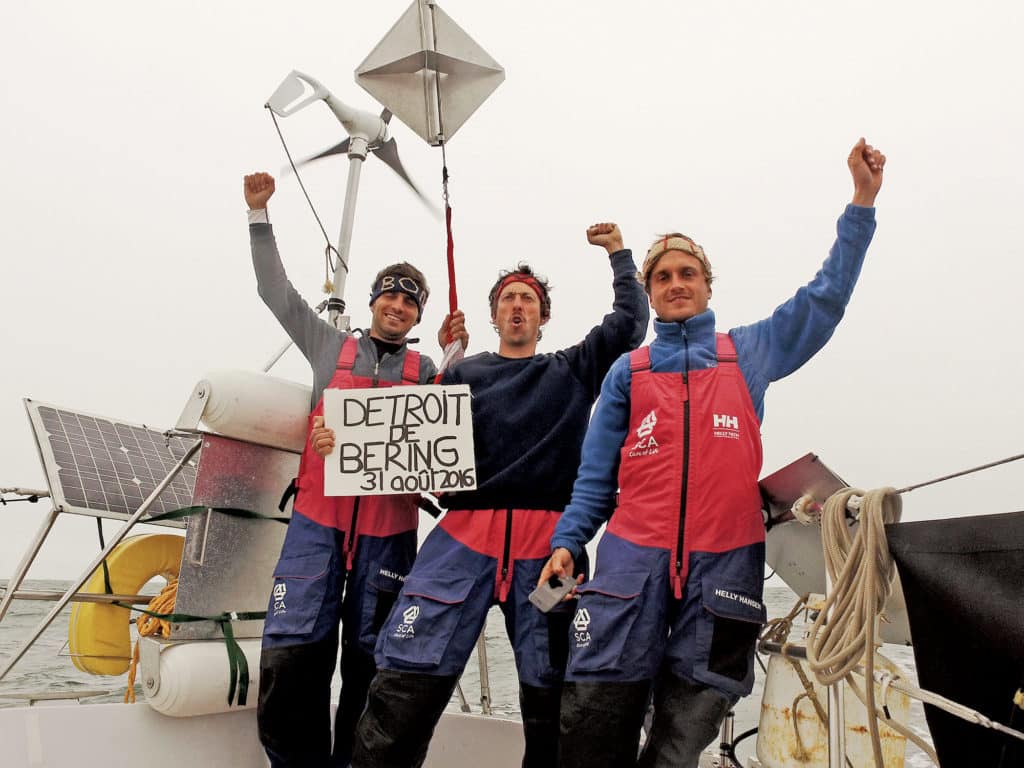
Not so very long ago, in a South Pacific anchorage, I watched a neighboring boat of three young cruisers going about their daily routine. Their 28-foot classic-plastic yacht looked as though it had been in a head-on collision with the watersports department at REI. Dive gear hung off every available inch of lifeline, a menagerie of floaty toys bobbed happily alongside. One crewmate was unsuccessfully attempting to launch a kiteboard off the stern while another filmed his efforts with a drone. As I watched, I couldn’t help but feel a mixed sense of amusement and pride. These guys epitomized my generation; they were millennial cruisers.
My husband, Robin (age 35), and I (30) have been cruising together for five years. In that time, we’ve met and interviewed scores of millennials for Waterborne, our website for 20- to 40-year-old sailors. In collecting their stories, we’ve found several common themes that typify how millennials are going about cruising today.
Old Boats, Young Salts
Millennials have less disposable cash, making boat purchases and cruising a financial challenge. According to a 2017 analysis of Federal Reserve data, today’s young people earn 20 percent less than their parents did at the same age and have 50 percent the net worth. Fortunately, our generation has inherited a vast supply of old fiberglass hulls. Of the young cruisers I’ve met, 95 percent own pre-1980s boats. While not the most mechanically inclined generation, millennials learn to make repairs by watching YouTube videos and, over the course of a year or two, get their boats cruise-ready.
One such couple, Ruth and Garrett Jolly, both 24 years old, in the search for their dream cruising boat, bought, refitted, sailed and sold six old boats! “We’d find these old boats on the chopping block for free or a couple thousand bucks,” Garrett told me. “It wouldn’t necessarily be the boat that we wanted, but I couldn’t stand to see it destroyed. We’d just put in labor and reclaimed lumber, not really spend any money, and turn them around for a profit.”
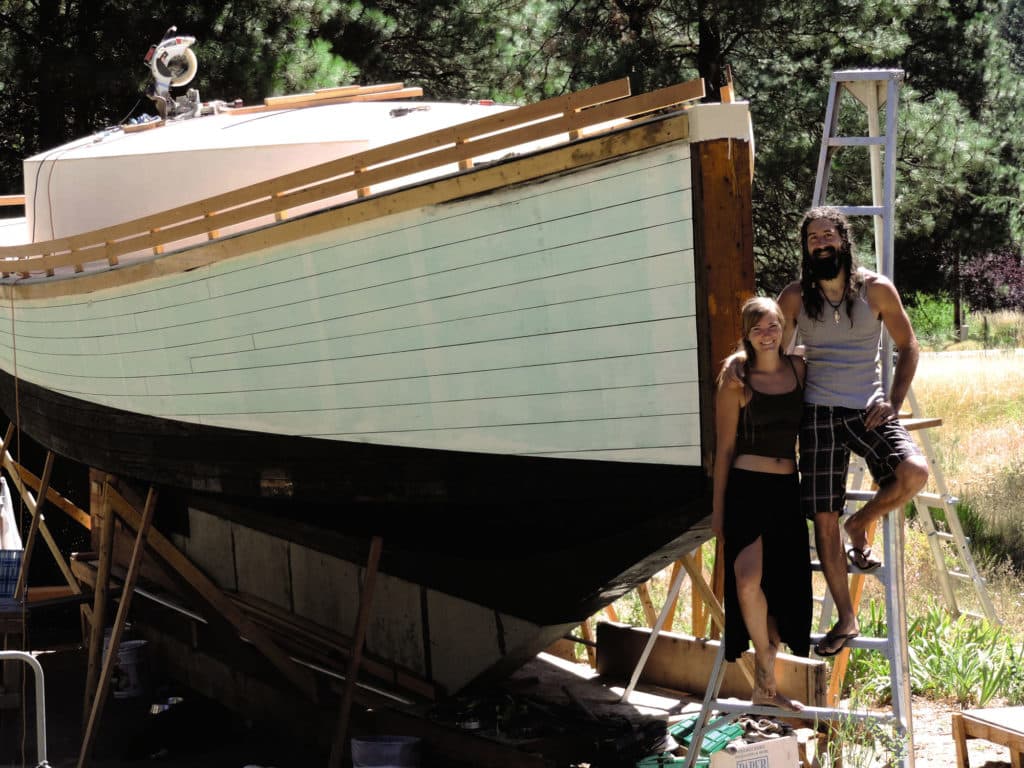
In the search for their “perfect” boat, the Jollys ultimately decided to build one from scratch—a 35-foot George Buehler ketch—in the mountains along the Columbia River.
Their advice for young cruisers: “If you think you’re interested in the ocean, the best way to find out for sure is to get out on the ocean. It doesn’t need to be scary, because you start hanging out with people and you get pumped.” Follow along with their adventures at saltandtar.org.
Charter, Borrow, Hitch
Other young cruisers are doing away with owning a boat altogether. For a generation accustomed to Worldwide Opportunities on Organic Farms, Airbnb and Uber, owning an asset that can cost thousands of dollars a year is less appealing than renting, borrowing or riding along.
Ian Drogin, a 28-year-old California native, along with his brother and three friends, chartered Hellenic Sky, a Bavaria 44, for a two-and-a-half month sailing and rock-climbing expedition in the Greek Islands.
“I think a lot of people have this idea of sailing being a luxury sport for the rich, but the way we did it seemed very financially manageable. Adventures are not as hard as you think. They’re actually pretty accessible,” he says.
Drogin estimates that the total cost of his trip was $2,500 to $4,000 per person, a fraction of what it would cost to purchase and outfit a boat for a similar adventure. You can find out more at iandrogin.com.
Even more financially friendly is boat-hiking. We’ve met dozens of young cruisers who are seeing the world by jumping from boat to boat. Boat-hiking opportunities seem to range from paying your way to all expenses paid.
Two hitchhiking experts, Mariusz Honka and Maciek Badziak, both 27, began their trip in Poland—with almost no sailing experience. They have since boat-hiked across the Atlantic and Pacific without spending a dime on accommodations or transportation, proving that you don’t need a boat to sail the world; you can just thumb it!
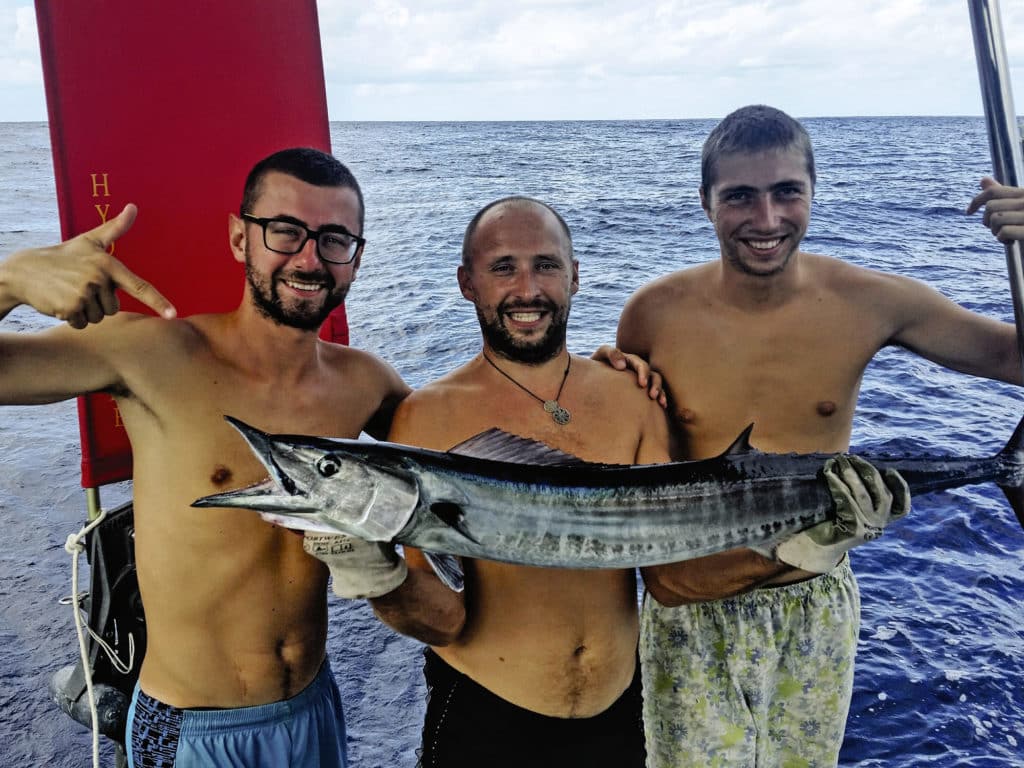
Their advice to those looking to hitch a ride: “Skippers prioritize good people over good sailors. Because of that, the most important thing is to have a positive attitude and an open mind. Do your research, get a little knowledge about sailing, but don’t hesitate too long. Adventure is waiting for you!”
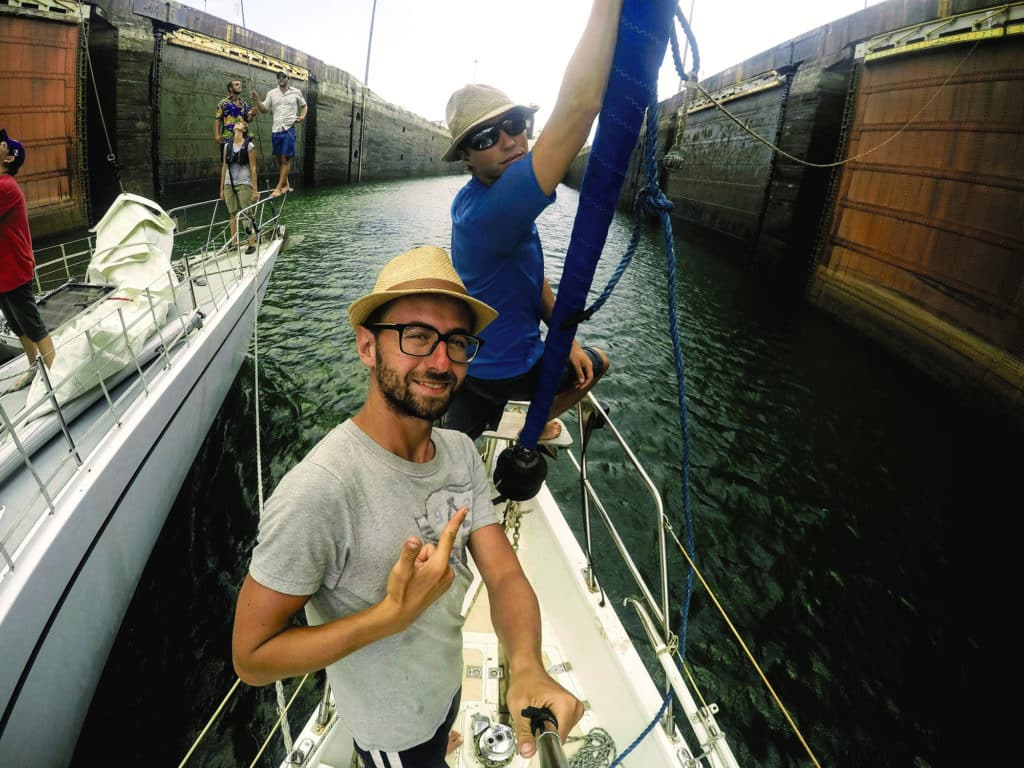
Hacking the Cruising Life
Steeped in tech and startup nomenclature, most millennials are familiar with the idea of life hacking: employing tricks, shortcuts or skills that increase productivity or efficiency. Millennial sailors apply this hacker’s mentality to many aspects of cruising. For example, they tend to opt for satellite communications over a single-sideband radio, choose multiple redundant/independent electronic charts over paper ones, and many prefer an iPad for navigation to a marine chart plotter. The majority have sailed for only a year or two before embarking on multiyear cruising trips. While young cruisers have a healthy respect for the ocean and their own limitations, they happily embrace hacks that get them cruising quicker and cheaper.
One good example is Mark Miele, 37, and Eden Yelland, 34, who, with little previous on-water experience, bought a trawler with their savings. As Miele put it, “We ended up with a trawler because we were looking to avoid the learning curve of sailing.” Six months later they left Victoria, Canada, bound for La Paz, Mexico, and became, they believe, the first people to make this journey in a 36-foot Universal Europa Sedan, proving the boat’s long-distance cruising ability.

They told me that they wouldn’t have been able to figure out the ins and outs of boats and cruising without the internet and YouTube. They said that they learned almost everything from one or the other.
Boaty Base Camp
Sailing for sailing’s sake is great, but young cruisers also think of their boats as a base camp, or a vehicle that serves as a platform for adventure sports. From rock climbing the rugged shores of Greenland to freediving in the Tuamotus, millennials aren’t content to sit and read a book on the boat all day.
Two Swiss brothers, Alexandre, 31, and David Giovannini, 29, recently navigated the Northwest Passage in Bonavalette, their 1979 Dufour 35. The trip was sponsored in part by Swiss cheese-maker Le Gruyère AOP—an excellent excuse for fondue on an iceberg!
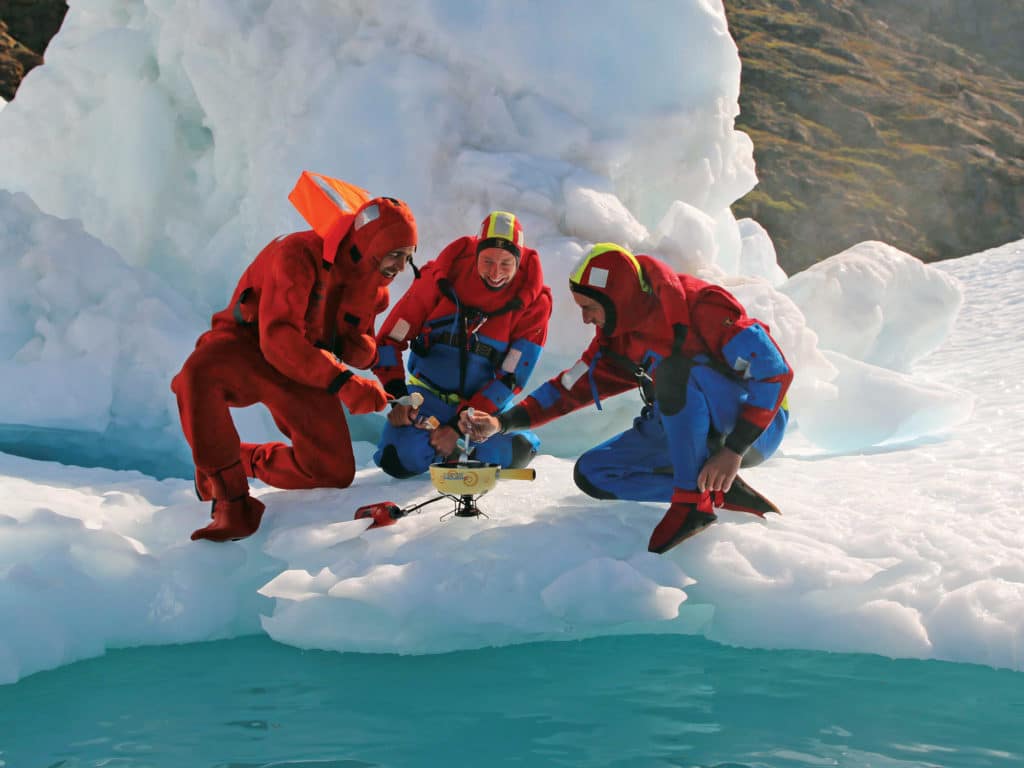
Both avid kiteboarders, they were determined to ride in one of the world’s most extreme environments. After donning survival suits, one brother flew the kite in the frigid waters of a small cove while the other sat in the dinghy looking out for polar bears.
“One thing we learned along the way is that while it’s great to just sail, your boat can also give you access to remote places where you can hike, climb, kiteboard or dive,” David says. “Some of our best experiences have been in places where we were the only boat in the anchorage.”
After this adventuresome duo successfully transited the Northwest Passage, they went on to kiteboard the warmer (and polar-bear-free) waters of the South Pacific. You can follow their adventures (in French) at Bonavalette Autourdumonde (facebook.com/bonavalette.autourdumonde).
Says Alexandre: “I think preparation is the most important thing. You don’t need an expensive boat, but it’s important to do lots of research. We were able to complete the Northwest Passage in a small fiberglass boat because we spent a lot of time preparing ourselves and the boat before we left.”
A Thousand Words
We have yet to meet a young cruiser who isn’t vlogging, blogging, photo journaling or writing a book about their cruise. At times, documenting a trip seems to absorb as much if not more time than actual sailing. Of course, it’s only natural that our generation’s fascination with media would extend to sharing stories about sailing and life aboard.
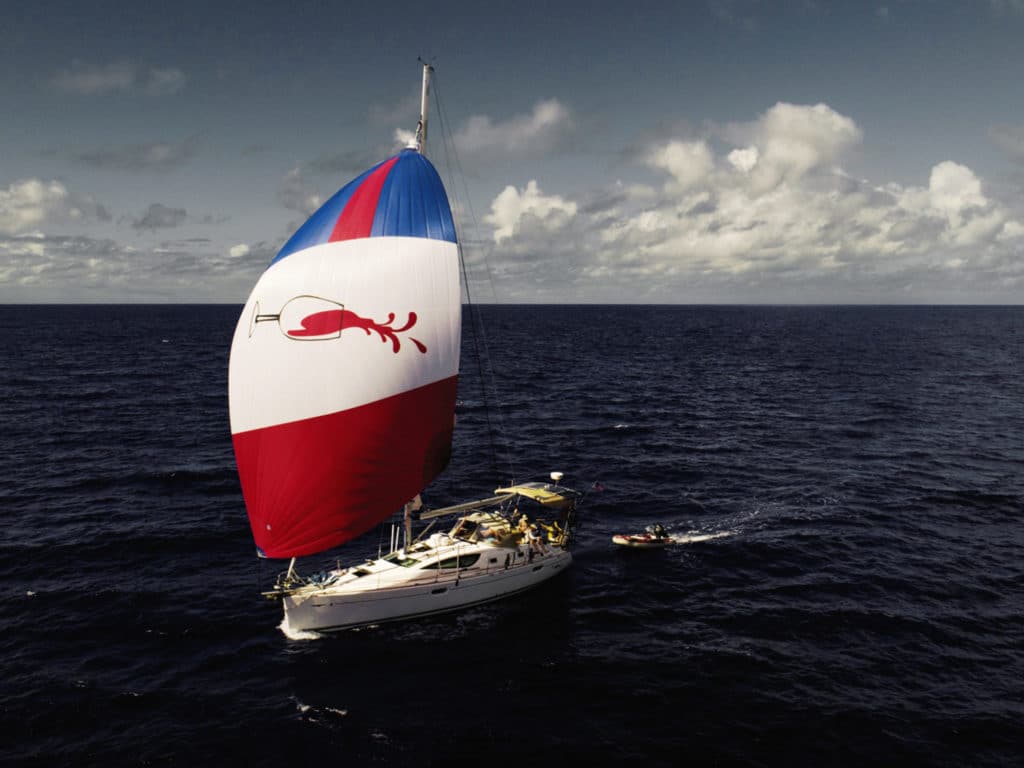
One top-notch example of sailing documentary is Canadian cinematographer Guillaume Beaudoin’s current project, Across the Salty Roads (facebook.com/acrossthesaltyroads/). The 34-year-old Beaudoin has just completed a boat-hiking trip across the Pacific, filming community-driven ocean-conservation projects. He told me that while he likes sailing, his real passion is storytelling. “Sailing to me is not about the number of miles I’ve covered; it’s about meeting new people, discovering new places, and sharing their stories.”
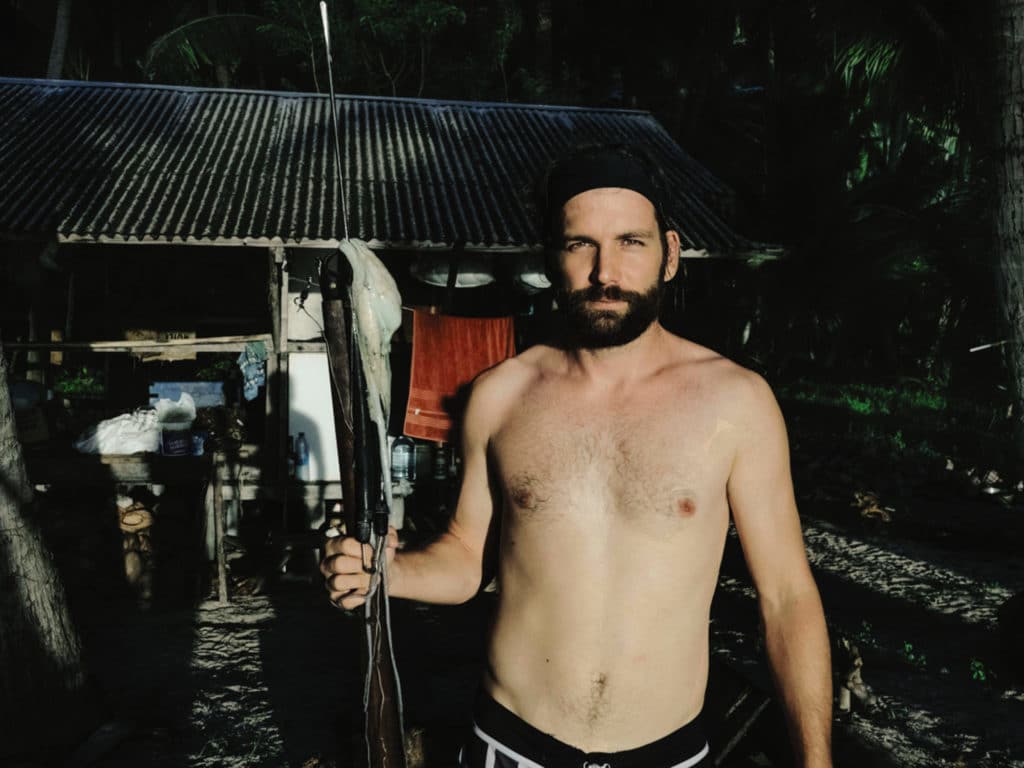
His advice for storytelling? “It’s important to understand the pros and cons of documenting your trip. The upside is, you’re going to get to go deeper into communities, go places you would never otherwise get to go. The downside is you have equipment to worry about and always have to work. So, you’re not as free as if you had gone on an adventure without filming it.”
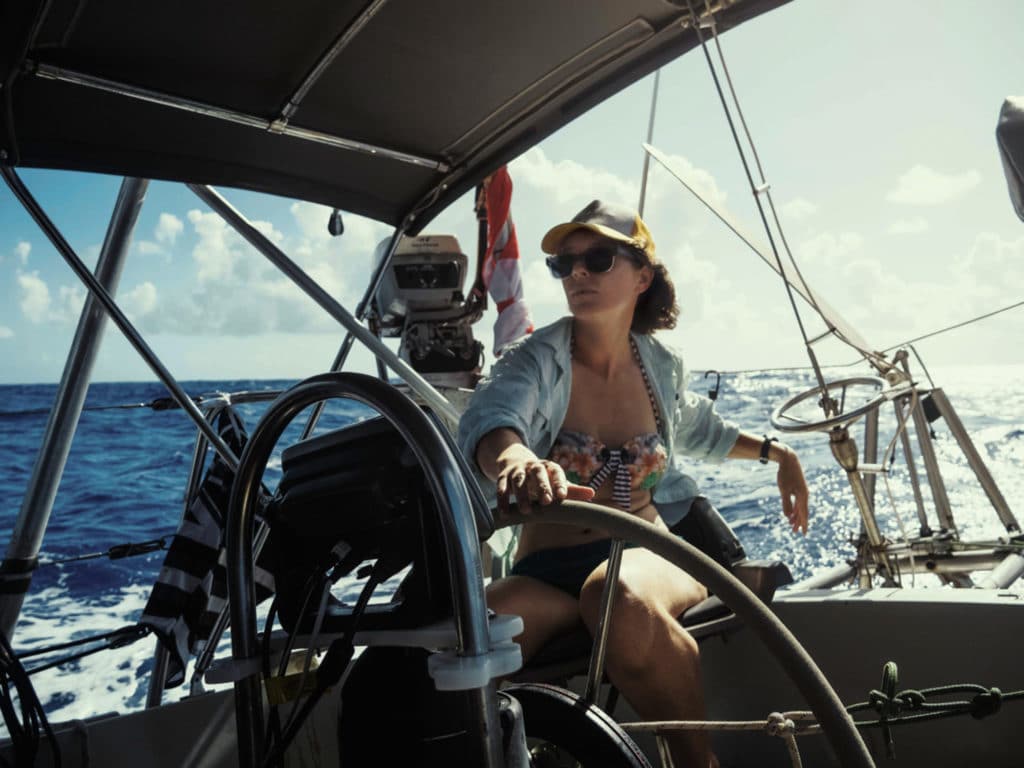
From drone-flying digital nomads to cruiser/climber adventurers, it’s exciting to see my generation develop a unique take on seeing the world by sail, and adding to cruising’s rich heritage of adventure, community and appreciation of the ocean. Undoubtedly, it will all be different 10 years from now, but I’d like to think that millennials will leave some mark on cruising culture, making it even more attractive and accessible for the next generation of sailors.
Fiona McGlynn is a freelance writer who recently cruised from Vancouver to Australia on a Dufour 35. McGlynn also runs waterbornemag.com, a website devoted to millennial sailing culture.








